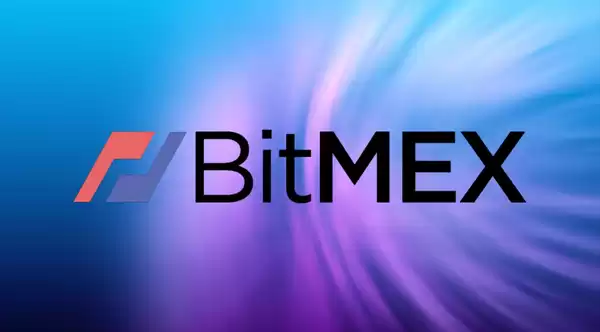-
 bitcoin
bitcoin $123963.239194 USD
1.37% -
 ethereum
ethereum $4529.082464 USD
1.07% -
 xrp
xrp $2.983640 USD
0.71% -
 tether
tether $1.000287 USD
0.02% -
 bnb
bnb $1179.874393 USD
2.99% -
 solana
solana $230.633678 USD
1.55% -
 usd-coin
usd-coin $0.999835 USD
0.03% -
 dogecoin
dogecoin $0.254240 USD
1.34% -
 tron
tron $0.341176 USD
0.15% -
 cardano
cardano $0.842285 USD
0.52% -
 hyperliquid
hyperliquid $48.537896 USD
-0.86% -
 chainlink
chainlink $21.863092 USD
-0.84% -
 ethena-usde
ethena-usde $0.999743 USD
-0.07% -
 sui
sui $3.579561 USD
-0.18% -
 stellar
stellar $0.403418 USD
2.67%
How to make money from BitMEX contracts
To maximize profits on BitMEX, traders can leverage the platform's options, learning about contract types and managing risk wisely through leverage and stop-loss orders.
Nov 18, 2024 at 01:02 pm

How to Make Money from BitMEX Contracts
BitMEX is a cryptocurrency derivatives exchange that allows users to trade futures, perpetuals, and options on a variety of cryptocurrencies. The platform is known for its high leverage and low fees, which make it a popular choice for traders looking to maximize their profits. However, trading on BitMEX can also be complex and risky, so it is crucial to do your research and understand the platform before getting started.
If you're new to BitMEX, it's crucial to take the time to learn how the platform works. There are a number of resources available online, including BitMEX's official help center, tutorials, and FAQs. You can also find helpful information in the BitMEX community forums.
Once you're comfortable with the basics, you can start learning about the different types of contracts available on BitMEX. Futures are contracts that obligate you to buy or sell a certain amount of cryptocurrency at a predetermined date and price. Perpetuals are similar to futures, but they do not have an expiry date. Options give you the right, but not the obligation, to buy or sell a certain amount of cryptocurrency at a specific price.
The next step is to decide which cryptocurrency you want to trade. BitMEX offers a wide range of cryptocurrencies, including Bitcoin, Ethereum, Litecoin, and Ripple. Do your research and choose a cryptocurrency that you believe has potential for growth.
Once you've chosen a cryptocurrency, it's time to open a trading account. BitMEX requires users to deposit cryptocurrency into their accounts in order to trade. You can deposit cryptocurrency from a personal wallet or from another exchange.
After your account is funded, you can start trading contracts. BitMEX offers a variety of order types, including market orders, limit orders, and stop orders. It's crucial to understand the different order types before placing any trades.
Once you've placed an order, it's crucial to monitor your trade closely. The cryptocurrency market is volatile, and prices can change quickly. It's crucial to be prepared to adjust your trading strategy as needed.
If your trade is successful, you can take profit by closing the order. You can also take a loss by closing the order. It's crucial to understand that losses are a part of trading and to be prepared to accept them.
Trading on BitMEX can be a rewarding but also risky experience. If you do your research and follow the steps outlined above, you'll be in a better position to make it a success.
Here are some additional tips for making money from BitMEX contracts:
- Use leverage wisely. Leverage can amplify your profits, but it can also amplify your losses. It's crucial to use leverage only when you're confident in your trading strategy.
- Manage your risk. Risk management is one of the most essential aspects of trading. It's crucial to set stop-loss orders and to limit your exposure to risk.
- Be patient. Trading is not a get-rich-quick scheme. It takes time and effort to learn how to trade successfully. Be patient and stay disciplined, and you'll be more likely to achieve your goals.
Disclaimer:info@kdj.com
The information provided is not trading advice. kdj.com does not assume any responsibility for any investments made based on the information provided in this article. Cryptocurrencies are highly volatile and it is highly recommended that you invest with caution after thorough research!
If you believe that the content used on this website infringes your copyright, please contact us immediately (info@kdj.com) and we will delete it promptly.
- BlockDAG, DOGE, HYPE Sponsorship: Crypto Trends Shaping 2025
- 2025-10-01 00:25:13
- Deutsche Börse and Circle: A StableCoin Adoption Powerhouse in Europe
- 2025-10-01 00:25:13
- BlockDAG's Presale Buzz: Is It the Crypto to Watch in October 2025?
- 2025-10-01 00:30:13
- Bitcoin, Crypto, and IQ: When Genius Meets Digital Gold?
- 2025-10-01 00:30:13
- Stablecoins, American Innovation, and Wallet Tokens: The Next Frontier
- 2025-10-01 00:35:12
- NBU, Coins, and Crypto in Ukraine: A New Yorker's Take
- 2025-10-01 00:45:14
Related knowledge

Practical parameter settings for a Bitcoin multi-timeframe moving average system
Sep 18,2025 at 10:54pm
Optimizing Timeframe Combinations for Bitcoin Trading1. Selecting appropriate timeframes is crucial when building a multi-timeframe moving average sys...

How can I filter out false breakouts in Dogecoin high-frequency trading?
Sep 22,2025 at 01:00am
Understanding False Breakouts in Dogecoin Trading1. A false breakout occurs when Dogecoin's price appears to move beyond a defined support or resistan...

Techniques for identifying tops and bottoms in the Bitcoin on-chain NVT model
Sep 20,2025 at 07:54pm
Understanding the NVT Model in Bitcoin Analysis1. The Network Value to Transactions (NVT) ratio is often described as the 'P/E ratio' of the cryptocur...

What does the surge in open interest in Bitcoincoin futures mean?
Sep 20,2025 at 11:18pm
Understanding the Surge in Dogecoin Futures Open Interest1. A surge in open interest within Dogecoin futures indicates a growing number of active cont...

How can I use the Ethereum USDT premium to gauge market sentiment?
Sep 18,2025 at 11:55pm
Understanding the Ethereum USDT Premium1. The Ethereum USDT premium refers to the price difference between USDT (Tether) traded on Ethereum-based plat...

What should I do if Ethereum staking yields decline?
Sep 20,2025 at 06:18am
Understanding the Causes Behind Declining Ethereum Staking Yields1. The Ethereum network transitioned to a proof-of-stake consensus mechanism with the...

Practical parameter settings for a Bitcoin multi-timeframe moving average system
Sep 18,2025 at 10:54pm
Optimizing Timeframe Combinations for Bitcoin Trading1. Selecting appropriate timeframes is crucial when building a multi-timeframe moving average sys...

How can I filter out false breakouts in Dogecoin high-frequency trading?
Sep 22,2025 at 01:00am
Understanding False Breakouts in Dogecoin Trading1. A false breakout occurs when Dogecoin's price appears to move beyond a defined support or resistan...

Techniques for identifying tops and bottoms in the Bitcoin on-chain NVT model
Sep 20,2025 at 07:54pm
Understanding the NVT Model in Bitcoin Analysis1. The Network Value to Transactions (NVT) ratio is often described as the 'P/E ratio' of the cryptocur...

What does the surge in open interest in Bitcoincoin futures mean?
Sep 20,2025 at 11:18pm
Understanding the Surge in Dogecoin Futures Open Interest1. A surge in open interest within Dogecoin futures indicates a growing number of active cont...

How can I use the Ethereum USDT premium to gauge market sentiment?
Sep 18,2025 at 11:55pm
Understanding the Ethereum USDT Premium1. The Ethereum USDT premium refers to the price difference between USDT (Tether) traded on Ethereum-based plat...

What should I do if Ethereum staking yields decline?
Sep 20,2025 at 06:18am
Understanding the Causes Behind Declining Ethereum Staking Yields1. The Ethereum network transitioned to a proof-of-stake consensus mechanism with the...
See all articles










































































